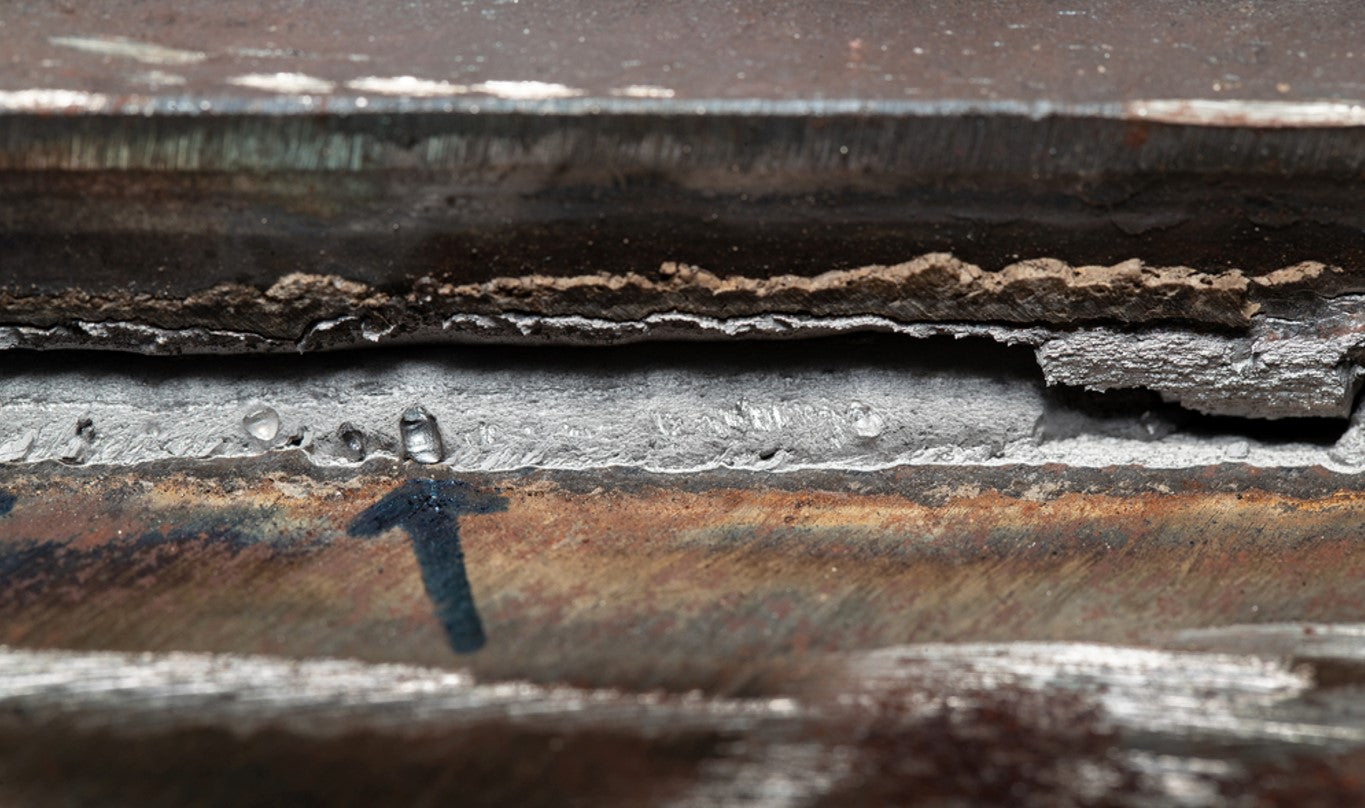Preventing Weld Undercut Demystified: Methods for Success
Preventing Weld Undercut Demystified: Methods for Success
Blog Article
Recognizing the Causes and Solutions for Undercut Welding in Metal Manufacture Procedures
In the world of steel fabrication processes, the incident of undercut welding postures a considerable challenge that requires a detailed understanding of its causes and sensible services. The detailed interaction of numerous factors throughout welding operations can result in this unwanted phenomenon, impacting the architectural stability and overall high quality of the bonded joints - Preventing weld undercut. By dissecting the root causes of undercut welding and discovering effective therapeutic measures, producers can boost the standard of their workmanship and make certain the production of flawless metal components
Common Root Causes Of Undercut Welding
Frequently neglected in metal construction, undercut welding takes place as a result of various elements that require precise interest and knowledge to be properly minimized. One common reason for undercut welding is too much warmth input. When the heat input is too expensive, it can cause the melting and subsequent erosion of the base material along the sides of the weld joint, developing a groove or undercut. Furthermore, improper welding techniques, such as using the incorrect welding angle or take a trip rate, can likewise add to damage development. Inadequate shielding gas coverage is an additional vital aspect that can cause undercutting. Inadequate gas insurance coverage falls short to safeguard the weld swimming pool properly, causing oxidation and undercut defects. Additionally, the option of welding parameters, such as voltage, present, and wire feed rate, plays a considerable function in the occurrence of undercut welding. Comprehending these common reasons is crucial for applying safety nets and making sure top quality welds in metal fabrication procedures.
Effect of Incorrect Welding Parameters
Imprecise welding criteria can significantly compromise the integrity and high quality of bonded joints in metal fabrication procedures. The effect of inaccurate welding parameters materializes in numerous methods, leading to structural weaknesses and defects in the bonded components. Meticulous interest to welding criteria is vital to make sure the manufacturing of premium welds with the wanted mechanical homes and structural stability.
Result of Improper Lantern Angle
Inappropriate lantern angle in welding operations can substantially impact the top quality and integrity of the final weld joints in metal fabrication processes. The torch angle plays an important function in identifying the heat input and circulation during welding. When the torch angle is wrong, concerns such as undercutting can arise. Undercutting is a common welding problem where a groove develops along the weld toe, deteriorating the joint and compromising its structural honesty.
A lantern angle that is also steep can result in inadequate infiltration, insufficient combination, and raised spatter. On the various other hand, a torch angle that is too shallow can cause excessive infiltration, burn-through, and distortion of the base product. Preventing weld undercut. Proper torch angle is necessary for ensuring consistent weld high quality, toughness, and appearance
To stop damaging and various other defects brought on by improper torch angles, welders need to be educated to preserve the correct lantern angle throughout the welding procedure. Regular monitoring and adjustment of lantern angles throughout welding can aid achieve audio welds with minimal defects.
Duty of Inadequate Welding Strategies

One more aspect of inadequate welding strategies is inappropriate weld prep work. Insufficient cleaning of the base metals, inaccurate joint design, or not enough edge prep work can all add to undercut welding. Insufficient protecting gas insurance coverage or using the wrong kind of gas can result in insufficient blend and the formation of undercut issues.
To address the function of poor welding strategies in steel manufacture procedures, it is important to supply comprehensive training for welders. Appropriate education and learning on welding specifications, joint prep work, and securing gas option can help stop undercut welding and ensure top notch welds in metal fabrication jobs.
Effective Solutions for Undercut Welding
Dealing with undercut welding in steel fabrication requires implementing reliable options to enhance weld high quality and architectural honesty. Among the main solutions to fight undercut is to change welding specifications such as voltage, present, and travel speed to make certain correct heat input and fusion. By fine-tuning these settings, welders can prevent too much melting of the base steel and filler product, minimizing the likelihood of undercut development.
In addition, correct joint preparation is critical in preventing undercut. Ensuring tidy base steel surfaces without pollutants and making use of the click to read more appropriate bevel angle can help advertise far better weld infiltration and minimize the danger of undercut - Preventing weld undercut. Employing appropriate welding techniques, such as oscillating the lantern or weaving, can also aid in distributing heat equally and filling the weld joint properly, lessening the possibility of undercut flaws
Moreover, picking the proper welding consumables, consisting of electrodes and filler read steels, is essential in reducing undercut. Making use of materials with ideal chemical structures and mechanical homes can add to accomplishing audio welds with very little undercut. Routine evaluation and quality assurance steps should additionally be implemented to find and resolve undercut problems immediately, making sure the overall honesty of fabricated steel parts.

Conclusion
Finally, comprehending the reasons and remedies for undercut welding in metal fabrication processes is essential for achieving top notch welds. By attending to common causes such as incorrect welding criteria, inappropriate torch angle, and poor welding methods, welders can prevent damaging and guarantee strong, durable welds. It is crucial to pay focus to these aspects and carry out efficient options to enhance the general welding procedure and end product top quality.

Report this page